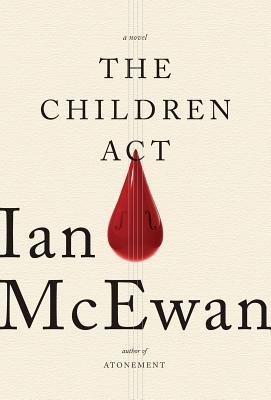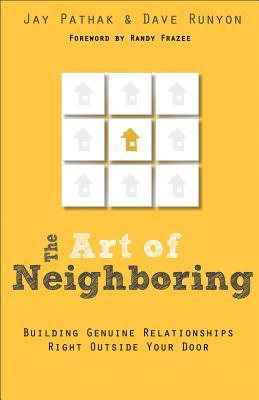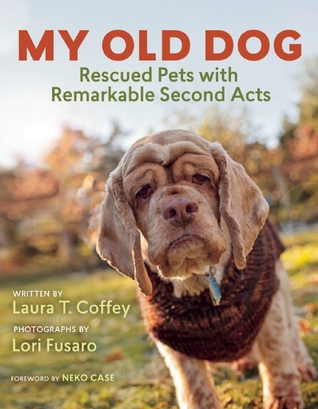
The Oregon Trail: a new American journey by Rinker Buck
One day by chance Rinker Buck finds a marked section of the original Oregon Trail. After he hikes a few miles of the trail he comes to a museum and finds out that there are organizations of "rut nuts" who have meticulously mapped out and maintain the Oregon Trail. This spurs him to dig into reading about the trail and he realizes how much the Oregon Trail shaped our country - not just by bringing people out West, but also our values, ideals, and government were very much shaped by the Oregon Trail. He also finds out that no one has driven the entire Oregon Trail in a covered wagon like the original pioneers - people have done sections of it, but often with large fleets of support vehicles. Rinker decides to do what no one has done since the late 1800's and drive a covered wagon the entire 2,100 mile Oregon Trail with no support vehicles and only his brother Nick and Nick's dog Olive Oyl for company. Their journey takes 4 months and is unforgettable. Rinker tells not only he and Nick's story, but also the story of the Oregon Trail - the pioneers who first used it, how the wagons they used were built, a whole history of mules, famous Trail landmarks, and much more. This is a fascinating story both of Rinker's personal Trail journey and the Oregon Trail's remarkable history. There are also some laugh-out-loud moments like when their mules run off and Rinker is chasing them through sagebrush. They meet lots of "trail family" people who help them out along the way or let them camp on their land - the whole trip they only have 1 bad encounter with a person. This is such a unique book that I would highly recommend to anyone!
Here are some quotes I really liked:
"Today, almost the entire 2,100-mile expanse of the Oregon Trail - even where it has been covered over by modern highways or railroad tracks - has been meticulously charted and marked, with long, undeveloped spaces now preserved as a National Historic Trail. Except for two bad stretches of suburban sprawl around Scottsdale, Nebraska, and Boise, Idaho, most of the rest of the trail is still accessible along remote farm and ranch roads in the West. In western Nebraska and central Wyoming, where the trail runs through relatively undisturbed federal lands or immense private ranches, there are still more than six hundred miles of original wagon ruts, just like the path I had hiked that day. The dreamscape chain of natural landmarks and river views that the pioneers saw - Signal Bluff and Chimney Rock along the Platte, Devil's Gate on the Sweetwater, Rendezvous Point at the Green - is all still there, virtually intact." (p. 5)
"Historian Richard Slotkin has shown how the myth of Indian savagery was required to justify the subjugation of the tribes so that their prairie kingdoms could be seized by Americans crossing the frontier after 1843. But that image, faithfully passed down by purple-sage novels and Hollywood westerns, is wildly inaccurate. The initial encounters between the first covered wagon trains and the tribes were extraordinarily friendly, and the pioneers would have never made it past Kansas without their Pawnee and Shoshone guides." (p. 16)
Pages 246-251 describe in laugh-out-loud detail chasing the mules down through sagebrush desert.
Pages 276-77 describe a hilarious encounter with a dumb park ranger.
Pages 281-286 describe Rinker and Nick "put on their Mormon" to get through Mormon country.
"This model of government support for a major development project became popular and was accepted as the new norm for western growth. Each new phase of frontier growth - the railroads, ranching, mining - was also supported by either outright governmental subsidies, land giveaways, or federally supported irrigation and bridge-building projects. That was the tradition established by the Oregon Trail and it has always amused me that the myth of 'rugged individualism' still plays such a large role in western folklore and American values. In fact, our vaunted rugged individualism was financed by huge government largesse." (p. 314)
Here are some quotes I really liked:
"Today, almost the entire 2,100-mile expanse of the Oregon Trail - even where it has been covered over by modern highways or railroad tracks - has been meticulously charted and marked, with long, undeveloped spaces now preserved as a National Historic Trail. Except for two bad stretches of suburban sprawl around Scottsdale, Nebraska, and Boise, Idaho, most of the rest of the trail is still accessible along remote farm and ranch roads in the West. In western Nebraska and central Wyoming, where the trail runs through relatively undisturbed federal lands or immense private ranches, there are still more than six hundred miles of original wagon ruts, just like the path I had hiked that day. The dreamscape chain of natural landmarks and river views that the pioneers saw - Signal Bluff and Chimney Rock along the Platte, Devil's Gate on the Sweetwater, Rendezvous Point at the Green - is all still there, virtually intact." (p. 5)
"Historian Richard Slotkin has shown how the myth of Indian savagery was required to justify the subjugation of the tribes so that their prairie kingdoms could be seized by Americans crossing the frontier after 1843. But that image, faithfully passed down by purple-sage novels and Hollywood westerns, is wildly inaccurate. The initial encounters between the first covered wagon trains and the tribes were extraordinarily friendly, and the pioneers would have never made it past Kansas without their Pawnee and Shoshone guides." (p. 16)
Pages 246-251 describe in laugh-out-loud detail chasing the mules down through sagebrush desert.
Pages 276-77 describe a hilarious encounter with a dumb park ranger.
Pages 281-286 describe Rinker and Nick "put on their Mormon" to get through Mormon country.
"This model of government support for a major development project became popular and was accepted as the new norm for western growth. Each new phase of frontier growth - the railroads, ranching, mining - was also supported by either outright governmental subsidies, land giveaways, or federally supported irrigation and bridge-building projects. That was the tradition established by the Oregon Trail and it has always amused me that the myth of 'rugged individualism' still plays such a large role in western folklore and American values. In fact, our vaunted rugged individualism was financed by huge government largesse." (p. 314)

Lord of the Flies by William Golding (Books & Banter book club)
Thankfully this is a quick read since it's pretty disturbing. A group of schoolchildren are wrecked on an isolated island. Quickly they elect a leader who tries to organize their group. But, within a short amount of time the children are going wild - they move from killing wild pigs to eat to killing each other. This is an example of how children are not "inherently good," but rather this shows how quickly we would revert to our basest selves when outside of civilization.
I remembered from reading this in high school that it was violent, but there were a few things I had forgotten. It's a quick, but violent read. It will be interesting to see how the book club discussion goes...
I remembered from reading this in high school that it was violent, but there were a few things I had forgotten. It's a quick, but violent read. It will be interesting to see how the book club discussion goes...

The Children Act by Ian McEwan (Evening Edition book club)
High Court judge Fiona Maye is called on to try an urgent Family Court case involving seventeen-year-old Adam who is refusing life-saving medical treatment on the grounds of religious belief. Just before she got the call about this case Fiona received devastating news from her husband. Her marriage and more come into play with her decision in the case of Adam. Her decision will affect both of them in devastating ways.
The first two sections of this book were SO SLOW that I would have quit reading it if this wasn't for book club. The last three sections each get better than the last one. Only at the very end of the book do we finally get to see Fiona as a human - not just a meticulous judge. While I didn't really like most of the book Adam's character is done really well and the very end redeems Fiona. But, overall it was a very slow and cold read. It will be interesting to see what the book club discussion is like.
The first two sections of this book were SO SLOW that I would have quit reading it if this wasn't for book club. The last three sections each get better than the last one. Only at the very end of the book do we finally get to see Fiona as a human - not just a meticulous judge. While I didn't really like most of the book Adam's character is done really well and the very end redeems Fiona. But, overall it was a very slow and cold read. It will be interesting to see what the book club discussion is like.

The Art of Neighboring by Jay Pathak and Dave Runyon
I put this book on hold because we've been having problems with one of our neighbors for over a year now. I was interested to see what this book would say about neighbors from a Christian perspective. The book is written by two pastors who were challenged by their community to put into practice Jesus's Great Commandment to "'Love the Lord your God with all your heart and with all your soul and with all your strength and with all your mind,' and, 'Love your neighbor as yourself.'" (Luke 10:27) They work with other area churches to coordinate a sermon series about loving your neighbor to encourage their members to be better neighbors. This book in turn encourages the readers to do the same - get to know their neighbors and develop relationships with them. They discuss how seemingly little things can really make a big impact on someone. I agree with them that today many people don't know their neighbors and we didn't in our last neighborhood. Now we live in a small neighborhood with only 8 houses, so we do know each of our neighbors by name and have spent time with all of them at some point. But, that also makes it harder when one of those neighbors becomes a problem. While they do address "problem neighbors" it's kind of cursory and I would have liked to see more examples and help with this, but mainly because that's my own personal issue right now. Overall, a good book with a great message.
Some quotes I really liked:
[an exercise in the book is to fill out a grid with info about your closest 8 neighbors] "About 10 percent of people can fill out the names of all eight of their neighbors, line a. About 3 percent can fill out line b [Some facts that you couldn't see just by standing in your driveway - where they are from, interests, hobbies, etc.] for every home. Less than 1 percent can fill out line c [in-depth info - career plans, goals, spiritual beliefs, etc.] for every home." (p.39)
"Take another look at Mary. In particular, this one sentence is significant: Mary 'sat at the Lord's feet listening to what he said.' In Hebrew culture, to sit at someone's feet indicates a relationship between a disciple and a teacher. In that culture, however, women weren't supposed to be students, much less disciples of a rabbi. They were supposed to be in the kitchen helping fix a meal; a woman's identity was intertwined with her ability to be a good hostess. But Mary defies the cultural norms of her day." (p. 52)
"We don't love our neighbors to convert them; we love our neighbors because we are converted. And the truth is, many Christians have been taught by well-meaning people that they should do nice things solely for an opportunity to have a spiritual conversation...We are called to love people - period. Whether those people ever take any steps toward God is beside the point." (p. 102-3)
"There is a world of difference between forgiveness and reconciliation. Just because we forgive someone doesn't mean we need to be best friends with him. Sometimes a relationship will still be broken, even if forgiveness has been granted. Reconciliation is the hard work of how we go forward together, whereas forgiveness is an attitude of the heart. We should offer everyone forgiveness, but we will not be reconciled with everyone we have wronged or who has wronged us." (p. 163-4)
"Neighboring is not always about being happy and comfortable; it's about allowing God to polish off rough edges. Maturity happens when you put yourself in the place God wants you. Don't run because there's adversity. Maybe God wants to use the adversity to make you more like Jesus." (p. 168)
Some quotes I really liked:
[an exercise in the book is to fill out a grid with info about your closest 8 neighbors] "About 10 percent of people can fill out the names of all eight of their neighbors, line a. About 3 percent can fill out line b [Some facts that you couldn't see just by standing in your driveway - where they are from, interests, hobbies, etc.] for every home. Less than 1 percent can fill out line c [in-depth info - career plans, goals, spiritual beliefs, etc.] for every home." (p.39)
"Take another look at Mary. In particular, this one sentence is significant: Mary 'sat at the Lord's feet listening to what he said.' In Hebrew culture, to sit at someone's feet indicates a relationship between a disciple and a teacher. In that culture, however, women weren't supposed to be students, much less disciples of a rabbi. They were supposed to be in the kitchen helping fix a meal; a woman's identity was intertwined with her ability to be a good hostess. But Mary defies the cultural norms of her day." (p. 52)
"We don't love our neighbors to convert them; we love our neighbors because we are converted. And the truth is, many Christians have been taught by well-meaning people that they should do nice things solely for an opportunity to have a spiritual conversation...We are called to love people - period. Whether those people ever take any steps toward God is beside the point." (p. 102-3)
"There is a world of difference between forgiveness and reconciliation. Just because we forgive someone doesn't mean we need to be best friends with him. Sometimes a relationship will still be broken, even if forgiveness has been granted. Reconciliation is the hard work of how we go forward together, whereas forgiveness is an attitude of the heart. We should offer everyone forgiveness, but we will not be reconciled with everyone we have wronged or who has wronged us." (p. 163-4)
"Neighboring is not always about being happy and comfortable; it's about allowing God to polish off rough edges. Maturity happens when you put yourself in the place God wants you. Don't run because there's adversity. Maybe God wants to use the adversity to make you more like Jesus." (p. 168)

Whiskey & Charlie by Annabel Smith
Whiskey and Charlie are twins who were inseparable as children, but by the time they are adults they are barely speaking. Whiskey is everything Charlie is not - popular, daring, confident and carefree - and Charlie has always blamed Whiskey for stealing the limelight. When Whiskey is left in a coma after an accident, Charlie realizes that he may never have the chance to make things right with Whiskey. While Charlie waits in the hospital hoping Whiskey wakes up, he contemplates their relationship and starts to realize that maybe he was too hard on Whiskey and is just as much to blame for their strained relationship. Unfortunately it's taken Whiskey being near death for Charlie to even be open to their relationship and now he hopes that he will have the chance to make things right.
While I found the beginning of the book a little depressing as Charlie recounts growing up in Whiskey's shadow, the second half of the book is much better as you see Charlie really reassessing his relationship with not only Whiskey, but other people in his life. I was really impressed with how the story unfolded and the end is really well done. Anyone with difficult or dysfunctional family members (which is pretty much everyone) will appreciate this story and Charlie's struggle.
While I found the beginning of the book a little depressing as Charlie recounts growing up in Whiskey's shadow, the second half of the book is much better as you see Charlie really reassessing his relationship with not only Whiskey, but other people in his life. I was really impressed with how the story unfolded and the end is really well done. Anyone with difficult or dysfunctional family members (which is pretty much everyone) will appreciate this story and Charlie's struggle.

My Old Dog: rescued pets with remarkable second acts by Laura T. Coffey
Photographer Lori Fusaro was using her photography skills to help animals in high-risk LA animal shelters get adopted. In doing that work she saw how many older dogs often languished in shelters - these were more often than not great dogs who's owner may have passed away or for some reason couldn't keep them. When Laura Coffey wrote a story for TODAY show website about Lori's work and adopting older dogs it turned into this book. These two ladies highlight stories of older dogs who have been rescued and lived great "second" lives. Many of these stories will break your heart thinking about what would have happened to these great dogs if their rescuers hadn't taken the chance on an older pet. Coffey reiterates that older dogs are often MUCH easier pets because they are already housebroken and often don't require "tiring out" to calm down. The obvious downsides are that older dogs often don't have as many years left and some can require costly vet care. But, the benefits outweigh the negatives as these stories show! There are also some great tips and resources if you're considering adopting an older dog in the last section of the book. And as more of a cat person myself, I would say this is the same for cats - consider adopting an older pet cat OR dog! This is a must-read for any animal person!

Inside the O'Briens by Lisa Genova
When Joe O'Brien starts having mood swings and weird physical symptoms he chalks it up to stress. He's a veteran Boston police officer, so every day is often stressful. But, soon other people are noticing and his wife finally makes him go to the doctor. He never expects a diagnosis of Huntington's Disease - a fatal neurological disorder that kills within 10-15 years of exhibiting symptoms. He also finds out that each of his 4 kids have a 50% chance of getting Huntington's too. The book is told from Joe's perspective and also from Katie's perspective, Joe's youngest daughter. Each of his kids reacts differently to the diagnosis and whether or not they will take the genetic test that will determine their fate with Huntington's. This is a unique look at a very rare and deadly disease. Joe's character is immediately likable and parts of the story are laugh-out-loud funny and others will make you tear up and Joe struggles with his diagnosis and how his family is trying to cope. While not a happy ending kind of book it's not a total downer and it does end on a more hopeful note. This is another great novel from Lisa Genova.
No comments:
Post a Comment